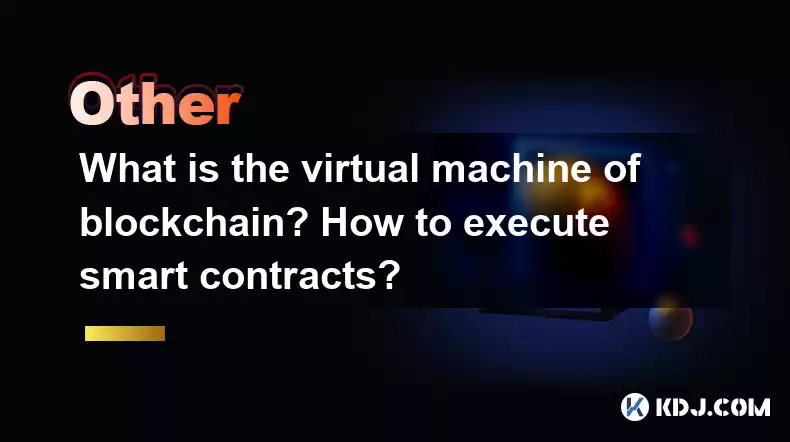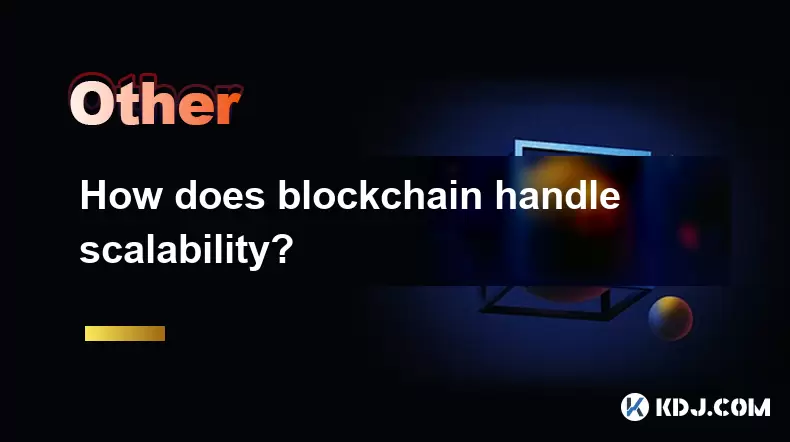-
 Bitcoin
Bitcoin $112400
-1.07% -
 Ethereum
Ethereum $3409
-3.27% -
 XRP
XRP $2.784
-6.60% -
 Tether USDt
Tether USDt $0.9997
-0.03% -
 BNB
BNB $739.3
-2.09% -
 Solana
Solana $158.0
-2.90% -
 USDC
USDC $0.9998
-0.02% -
 TRON
TRON $0.3213
-0.94% -
 Dogecoin
Dogecoin $0.1929
-5.01% -
 Cardano
Cardano $0.6974
-2.82% -
 Hyperliquid
Hyperliquid $36.69
-2.31% -
 Sui
Sui $3.327
-4.80% -
 Stellar
Stellar $0.3672
-5.18% -
 Chainlink
Chainlink $15.65
-3.07% -
 Bitcoin Cash
Bitcoin Cash $525.0
-1.68% -
 Hedera
Hedera $0.2291
-6.00% -
 Avalanche
Avalanche $20.91
-2.96% -
 Ethena USDe
Ethena USDe $1.000
0.00% -
 Toncoin
Toncoin $3.520
-1.12% -
 UNUS SED LEO
UNUS SED LEO $8.968
0.14% -
 Litecoin
Litecoin $105.7
0.26% -
 Shiba Inu
Shiba Inu $0.00001181
-1.79% -
 Polkadot
Polkadot $3.492
-2.08% -
 Uniswap
Uniswap $8.800
-3.10% -
 Dai
Dai $0.9999
-0.01% -
 Monero
Monero $289.9
-3.17% -
 Bitget Token
Bitget Token $4.243
-1.27% -
 Pepe
Pepe $0.00001006
-3.67% -
 Cronos
Cronos $0.1248
-5.68% -
 Aave
Aave $249.7
-2.50%
What is the virtual machine of blockchain? How to execute smart contracts?
A blockchain virtual machine, like Ethereum's EVM, executes smart contracts securely and consistently across nodes, ensuring network integrity.
Apr 27, 2025 at 02:07 pm

The concept of a virtual machine in the context of blockchain is pivotal to understanding how decentralized applications and smart contracts function. A virtual machine (VM) in blockchain technology is a crucial component that provides a controlled environment for executing smart contracts and other decentralized applications (dApps). The VM ensures that the code runs in a secure and isolated manner, preventing any direct access to the underlying hardware or network resources. This isolation is essential for maintaining the integrity and security of the blockchain network.
What is a Virtual Machine in Blockchain?
A blockchain virtual machine is essentially a software emulation of a computer system that runs within the blockchain network. It interprets bytecode, which is a low-level representation of the smart contract code, and executes it on the blockchain. The most well-known example of a blockchain VM is the Ethereum Virtual Machine (EVM), which is used to execute smart contracts on the Ethereum blockchain. The EVM provides a runtime environment for smart contracts, ensuring that they are executed consistently across all nodes in the network.
How Does a Virtual Machine Work in Blockchain?
The operation of a blockchain virtual machine involves several key steps. When a smart contract is deployed on the blockchain, it is compiled into bytecode that the VM can understand. Each node in the blockchain network runs its own instance of the VM, and when a transaction triggers a smart contract, the VM on each node executes the contract's bytecode. This process ensures that the execution of the smart contract is deterministic, meaning that all nodes will reach the same result given the same input.
Importance of Virtual Machines in Blockchain Security
Security is one of the primary reasons why virtual machines are integral to blockchain technology. By running code in a virtual environment, the VM isolates the execution of smart contracts from the rest of the system. This isolation prevents malicious code from accessing sensitive data or causing harm to the network. Additionally, the VM enforces strict rules and gas limits to prevent infinite loops and other resource-intensive operations that could compromise the network.
Executing Smart Contracts on a Virtual Machine
The execution of smart contracts on a blockchain virtual machine involves several steps that ensure the contract's code is run correctly and securely. Here's how you can execute a smart contract on a VM:
- Write the Smart Contract: First, you need to write your smart contract in a programming language compatible with the blockchain's VM, such as Solidity for Ethereum.
- Compile the Smart Contract: Use a compiler to convert the smart contract code into bytecode that the VM can execute.
- Deploy the Smart Contract: Deploy the bytecode onto the blockchain by sending a transaction that includes the bytecode and any necessary initialization parameters.
- Trigger the Smart Contract: Once deployed, you can trigger the smart contract by sending a transaction that calls one of its functions. This transaction is broadcast to the network and processed by each node's VM.
- VM Execution: The VM on each node interprets the bytecode and executes the smart contract's logic. The result of the execution is then recorded on the blockchain.
Examples of Virtual Machines in Different Blockchains
While the EVM is the most famous, other blockchains have their own virtual machines tailored to their specific needs. For instance, the Cardano blockchain uses the IELE Virtual Machine, which is designed to be more efficient and support formal verification of smart contracts. Similarly, the EOS blockchain employs the WebAssembly (WASM)-based VM, which allows for faster execution and better performance compared to traditional VMs.
How to Interact with a Blockchain Virtual Machine
Interacting with a blockchain virtual machine typically involves using specialized tools and interfaces. Here's how you can interact with the EVM as an example:
- Use a Wallet: You can use a cryptocurrency wallet that supports smart contract interactions, such as MetaMask for Ethereum. These wallets provide a user-friendly interface to deploy and call smart contracts.
- Use a Development Environment: Developers often use integrated development environments (IDEs) like Remix or Truffle, which provide tools for writing, compiling, and deploying smart contracts directly to the blockchain.
- Command Line Interface (CLI): For more advanced users, command line tools like Geth or Parity can be used to interact with the EVM directly. These tools allow for fine-grained control over smart contract execution and blockchain interactions.
Challenges and Considerations with Virtual Machines
While virtual machines are essential for blockchain functionality, they also come with challenges. Scalability is a significant concern, as the execution of smart contracts can be resource-intensive and slow down the network. Additionally, the complexity of smart contract code can lead to vulnerabilities if not properly audited and tested. Developers must carefully consider these factors when designing and deploying smart contracts on a blockchain VM.
Frequently Asked Questions
Q: Can a virtual machine in blockchain be used for purposes other than smart contracts?
A: Yes, besides executing smart contracts, blockchain virtual machines can be used for running decentralized applications (dApps), executing consensus algorithms, and even for testing and simulation purposes within the blockchain network.
Q: How does the gas mechanism work in relation to virtual machines?
A: The gas mechanism is a way to measure and limit the computational effort required to execute operations on a blockchain VM. Each operation has a predefined gas cost, and users must pay for the gas to execute their transactions. This prevents abuse of the network and ensures that resources are allocated fairly.
Q: Are there any alternatives to using virtual machines for smart contract execution?
A: While virtual machines are the most common method, some blockchains explore alternatives like native code execution or sidechains. However, these alternatives often come with their own set of security and compatibility challenges.
Q: How do updates and upgrades to a virtual machine affect existing smart contracts?
A: Updates to a virtual machine can be complex, as they need to ensure backward compatibility with existing smart contracts. Typically, blockchain networks implement a hard fork or a soft fork to introduce VM changes, ensuring that all nodes agree on the new rules and that existing contracts continue to function as intended.
Disclaimer:info@kdj.com
The information provided is not trading advice. kdj.com does not assume any responsibility for any investments made based on the information provided in this article. Cryptocurrencies are highly volatile and it is highly recommended that you invest with caution after thorough research!
If you believe that the content used on this website infringes your copyright, please contact us immediately (info@kdj.com) and we will delete it promptly.
- BlockDAG, SEI, Ethena: Top Crypto Performers Under the Microscope
- 2025-08-03 10:50:16
- Bitcoin Blasts Past $119K: How Institutional Adoption and Macro Shifts Fuel the Fire
- 2025-08-03 10:55:16
- Crypto, Grok, and August: Decoding the Latest Trends and Insights
- 2025-08-03 11:10:16
- Crypto, Phishing, and Your Wallet: A New Yorker's Guide to Staying Safe
- 2025-08-03 10:30:16
- Troller Cat Meme Coin Presale Soars: A New King in the Crypto Jungle?
- 2025-08-03 10:30:16
- Grayscale, Altcoin Trust, and Mid-Cap Mania: What's the Deal?
- 2025-08-03 08:50:16
Related knowledge

What is the difference between on-chain and off-chain transactions?
Aug 02,2025 at 04:22pm
Understanding On-Chain TransactionsOn-chain transactions refer to digital asset transfers that are recorded directly on a blockchain ledger. These tra...

What is the double-spending problem and how does blockchain prevent it?
Aug 02,2025 at 01:07pm
Understanding the Double-Spending ProblemThe double-spending problem is a fundamental challenge in digital currency systems where the same digital tok...

What is the difference between a blockchain and a database?
Aug 01,2025 at 09:36pm
Understanding the Core Structure of a BlockchainA blockchain is a decentralized digital ledger that records data in a series of immutable blocks linke...

How does blockchain handle scalability?
Aug 02,2025 at 02:58pm
Understanding Blockchain Scalability ChallengesBlockchain scalability refers to a network's ability to handle an increasing volume of transactions wit...

What are the different types of blockchains?
Aug 03,2025 at 03:01am
Public Blockchains: Open and Decentralized NetworksPublic blockchains are the most widely recognized type of blockchain, characterized by their open a...

What is a hash in a blockchain?
Aug 02,2025 at 05:28am
Understanding the Concept of Hash in BlockchainA hash in the context of blockchain technology refers to a unique digital fingerprint generated by a cr...

What is the difference between on-chain and off-chain transactions?
Aug 02,2025 at 04:22pm
Understanding On-Chain TransactionsOn-chain transactions refer to digital asset transfers that are recorded directly on a blockchain ledger. These tra...

What is the double-spending problem and how does blockchain prevent it?
Aug 02,2025 at 01:07pm
Understanding the Double-Spending ProblemThe double-spending problem is a fundamental challenge in digital currency systems where the same digital tok...

What is the difference between a blockchain and a database?
Aug 01,2025 at 09:36pm
Understanding the Core Structure of a BlockchainA blockchain is a decentralized digital ledger that records data in a series of immutable blocks linke...

How does blockchain handle scalability?
Aug 02,2025 at 02:58pm
Understanding Blockchain Scalability ChallengesBlockchain scalability refers to a network's ability to handle an increasing volume of transactions wit...

What are the different types of blockchains?
Aug 03,2025 at 03:01am
Public Blockchains: Open and Decentralized NetworksPublic blockchains are the most widely recognized type of blockchain, characterized by their open a...

What is a hash in a blockchain?
Aug 02,2025 at 05:28am
Understanding the Concept of Hash in BlockchainA hash in the context of blockchain technology refers to a unique digital fingerprint generated by a cr...
See all articles

























































































